Having your own product line can be a great addition to your business. But how will people find out about you and your products and where could you possibly sell them? There are a lot of options out there. That’s why I want to talk about my experiences and other possibilities.
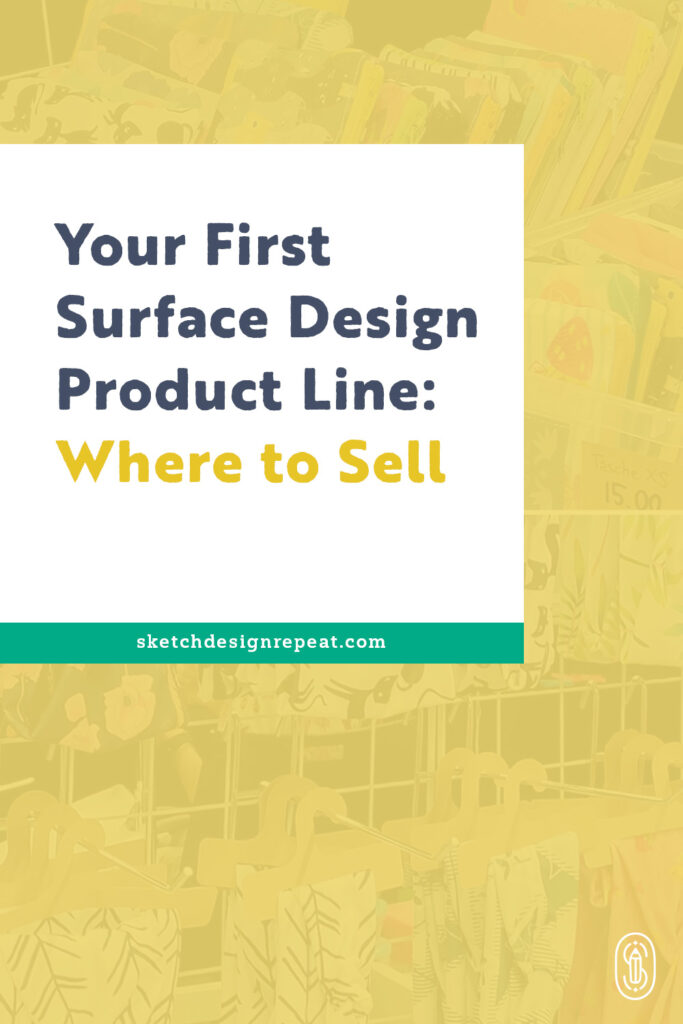
Are you still thinking about which products you could offer to your customers? I’ve written another blog post about product options that work great for surface designers. This will surely help you to come up with items your customers will love.
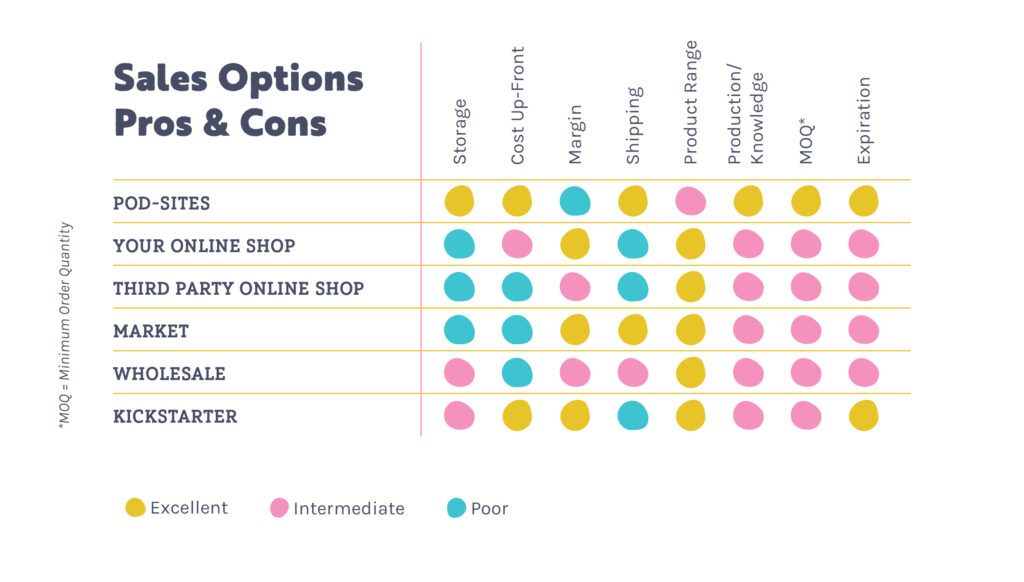
POD sites
Sketch Design Repeat’s 2022 Surface Design Industry Survey shows that POD (Print On Demand) is a surface designer’s most common stream of income. Let’s take a look at why this is such a popular option.
POD sites are great because the third-party companies store all the goods, usually have no minimum order quantity, do (most of) the marketing for you, and ship directly to clients when an order comes in. When using a POD site, you have no or very little up-front cost to start selling your own products. You can even offer items you have very little production knowledge of, because the POD company will take care of it.
Most sites are easy to navigate and uploading your files and designs is easy. Another aspect you don’t need to worry about is taking care of the website, including updates and security.
Sadly, all these perks also have their downsides. You need to stick to product options that are available. If you’d like to offer anything outside of their existing product range you are out of luck or have to use multiple POD sites to set up your whole desired product range, which makes it more work and a bit more complicated to keep track of everything. And because you are outsourcing most of the process onto their end, your margins tend to be pretty slim. Even though 55.4% of surface designers sell through POD, 75.1% of them made less than $1,000 in 2022.
Get your copy of the 2022 Industry Survey to gain even more insight into the surface design industry.
Your online shop
Having your own online shop can be the way to go, especially if you want to be in charge of every little detail. You can offer great customer service because you are surpassing any third-party companies. You are the one in charge of manufacturing your products, your marketing, and shipping out to customers. You can even sneak in additional goodies when a large order comes in or add a handwritten note. Branded packaging is another way to add a lot of personality to your shipped items, as you most likely won’t have any in-person contact with your customers.
But you’ll also have a lot of responsibility because of this. First of all, you need to set up your online store and make sure all legalities are met and your customer’s data is safe. Of course you can always outsource this to an agency, but the liability stays with you. Most website builders, like WordPress, Wix, or Squarespace, make it fairly easy though to add an online store to your website without additional help.
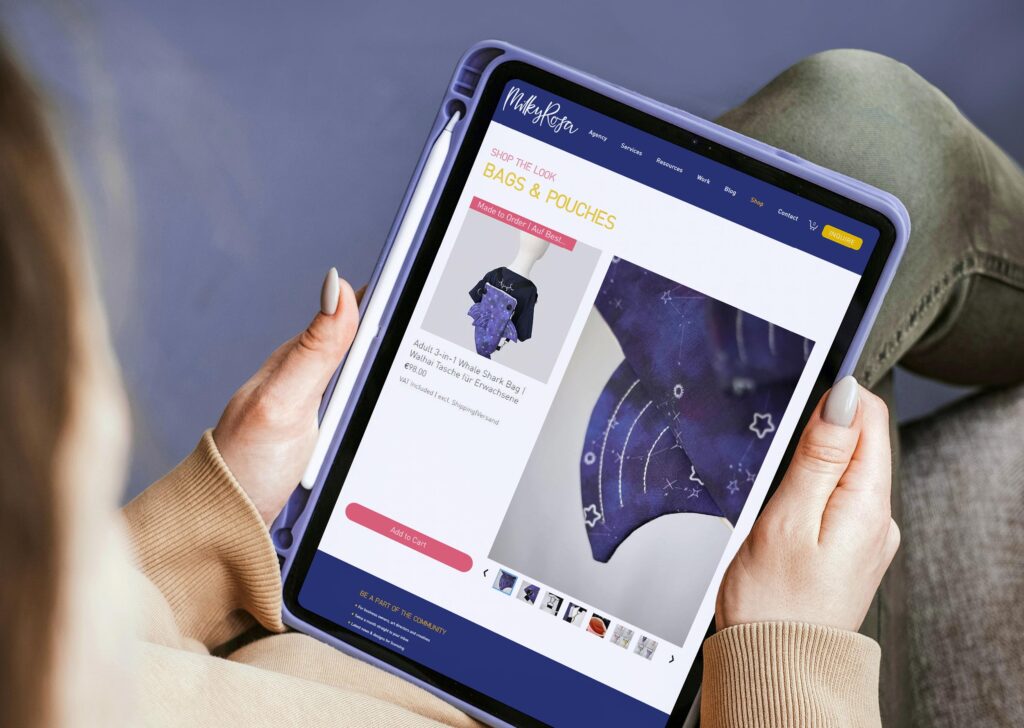
Depending on the products you want to offer, you need very little or in-depth knowledge about the manufacturing process itself and the up-front costs will be higher than working through a POD company. But you are rewarded with higher margins which you can define yourself.
Nowadays you can easily combine having your own online store with selling through a POD site due to POD integrations. It’s great if you are already running an online store and would like to branch out into different markets and test the waters before committing to ordering large quantities.
Third-party online shop
Using a third-party online shop may be a good way to get your product line off the ground. It’s very similar to running your own online shop, but let’s look at the differences:
It’s easier to get started because the third-party company hosts the website and takes care of updates, security, and some marketing. If you don’t have a big fan base yet you might benefit from selling through a third-party online shop first to build up a following and to get more eyes on your products.
You are still in charge of the production and shipping, but the site will take a cut of your sales for all the services they offer. Possible fees could be:
- Listing Fee: approx. $0.10–$0.50 flat rate paid per item you list in their store, even if you don’t sell the item. Listings usually expire after a set amount of time. You then have to re-list the item and have to pay the listing fee again.
- Transaction Fee: approximately 5–10% (of the sales price plus shipping) per sale
- Advertising and Promotional Fees: 10–15% (of the sales price plus shipping) per sale, if the sale was made because of an ad they placed outside of their site (e.g. Google, Facebook, or Instagram)
Related Article: Developing a Product Line
and How it Helps for Art Licensing
Markets
You may already know this, but selling my products at markets, craft fairs, and conventions is my go-to method. If you pick the right market it’s almost guaranteed that your ideal person will walk around and see your booth. You are more likely to make a sale even without any marketing on your end. And because you sell your products on location, you don’t have to think about shipping costs and how to fulfill your orders.
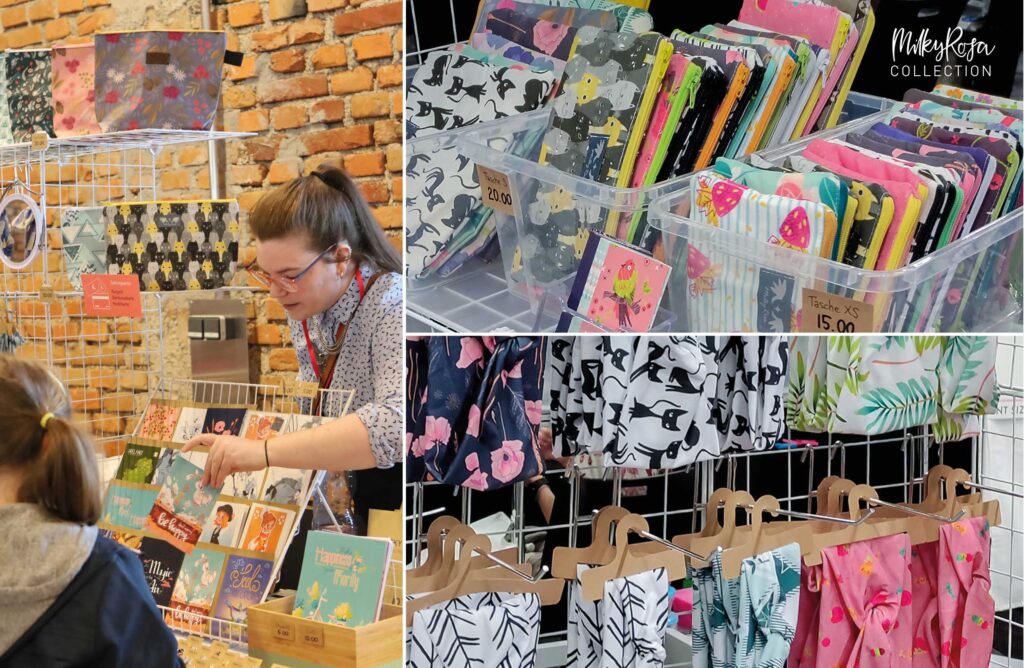
Having in-person contact with clients is one of the best things about doing fairs. Hearing the customer’s Ooh’s and Ah’s while looking at your creations and complimenting your style feels amazing and boosts your self-esteem. You also get direct feedback and see what people are leaning towards and want to have more of.
I also love the diversity of markets out there. My products are very colorful, targeted to a younger demographic that’s young-at-heart. That’s why I usually table at artist alleys at comic cons and anime conventions. If your products are high-end or more sophisticated, you might be better off getting a stall at a design or craft fair. Other possibilities are themed fairs, like renaissance fairs, Christmas markets, or county fairs.
On top of your product costs, you have to invest in your booth set-up, the booth fee, and transportation. Depending on the market’s size, a booth could cost you anything between $50 and $2,500. The latter is for well-known and established craft fairs. The most I ever paid for a stall was $180.
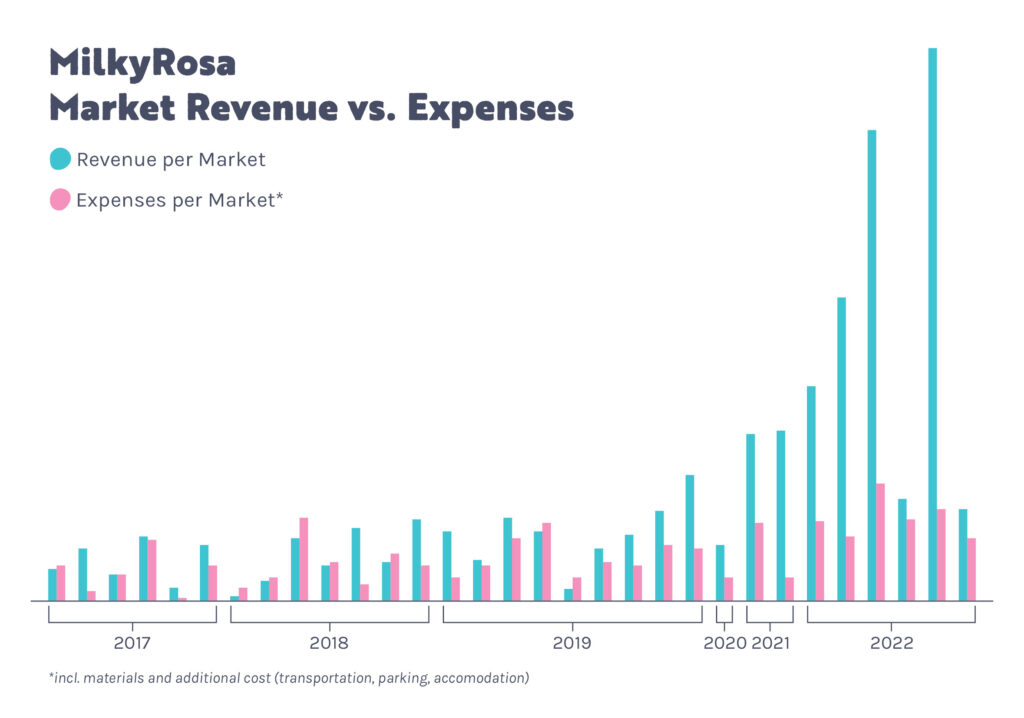
Wholesale
Another way to sell your products is through wholesale. With this method, you don’t target consumers directly, but through selected retailers like shops or boutiques. You’ll need to contact shop owners or the company’s purchasing department directly and negotiate a good deal for yourself.
Selling your products wholesale means that you receive the money for your products after the retailer purchases them. It is now their responsibility to market and sell the items. Wholesale price is usually double the production cost. This will result in a lower margin than selling the item yourself, but you don’t need to worry about any leftover stock or the item not selling at all. For production, you can either invest in stock up-front or get samples made to show to retailers and produce the quantity they want to order afterwards. Wholesale will usually only make sense if you get your products manufactured, as retailers tend to order in bigger batches. Having to make all products yourself may get pretty overwhelming and time-consuming.
Be mindful when negotiating a deal for your product line. Retailers may not want to purchase wholesale, as it’s a high-risk investment on their side, but prefer to agree to a consignment deal. This means you only get paid for the quantities the retailer is actually able to sell. Any stock that is left over will come back to you after a predetermined time frame. Consignment might still be a great option to establish a working relationship with a retailer for a first-time deal. To even out the risk, the retailer has a higher per-piece cost, which will leave you with a higher margin than wholesale.
Kickstarter
I haven’t used Kickstarter myself yet, but I’ve backed my share of campaigns. That’s why I want to give you a short summary of how it works and the pros and cons of running your own campaign from an outside perspective.
Kickstarter is a crowdfunding company that helps you determine people’s interest in a certain product of yours. You need to set up a campaign including pricing, production, timeframe, and fulfillment. People who are interested in your product, so-called backers, can now pledge your product. Because you need to set a minimum amount of overall investment, interested parties will only be charged if the set amount is reached or surpassed. If it’s below the set amount there are no costs for you or any backers.
This method keeps the risk and investment on your side low because you only need to invest in production if the interest in your product is high enough. You always need to have a prototype or sample though to showcase your finished product.

Kickstarter is a well-known method for marketing nowadays, so it’s not as easy to get people’s eyes on your campaign. Especially if you don’t have a large enough following yourself.
If you want to run a campaign for a handmade product, be sure to consider that you have to actually make the items — all of them. Some campaigns are very successful and get 200–500% funding. This means you have to make two or five times the number of products you first anticipated. Make sure you can handle making large quantities! If funding is higher than 100%, you may also have to offer additional products as stretch goals. You can look at other people’s campaigns to get ideas for your own add-ons.
Shipping out products is also your responsibility. Think ahead and calculate your shipping costs carefully and make sure you are set up to deliver on your promised campaign fulfillment.
Usually, when working with Kickstarter, you can make or manufacture more items than the amount being backed during the campaign, which leaves you with extra stock for your online shop, markets, or wholesale. If done right, they will already be paid for and all sales from then on will stay in your pocket.
Now you know which products work for your business and your clients and the best possible ways to sell them. The only thing left is figuring out how to manufacture your own product line. This will be the topic of another blog post coming shortly, so stay tuned for more info. If you don’t want to miss it, make sure to subscribe to the Sketch Design Repeat newsletter.
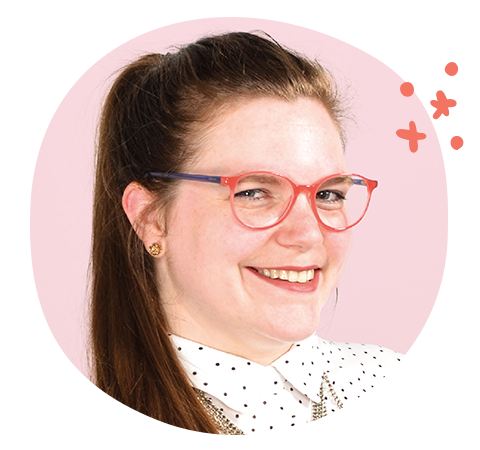
Written by Nina Schindlinger
Website: www.milkyrosa.com
Instagram: @milkyrosadesignagency
Class: Create Your First Product
Nina is the founder and creative director of MilkyRosa Design Agency. She specialises in branding and product design for companies that are young at heart. Her design style is bold, playful and charming, which she uses for her own line of products to make the world a fun and colourful place.